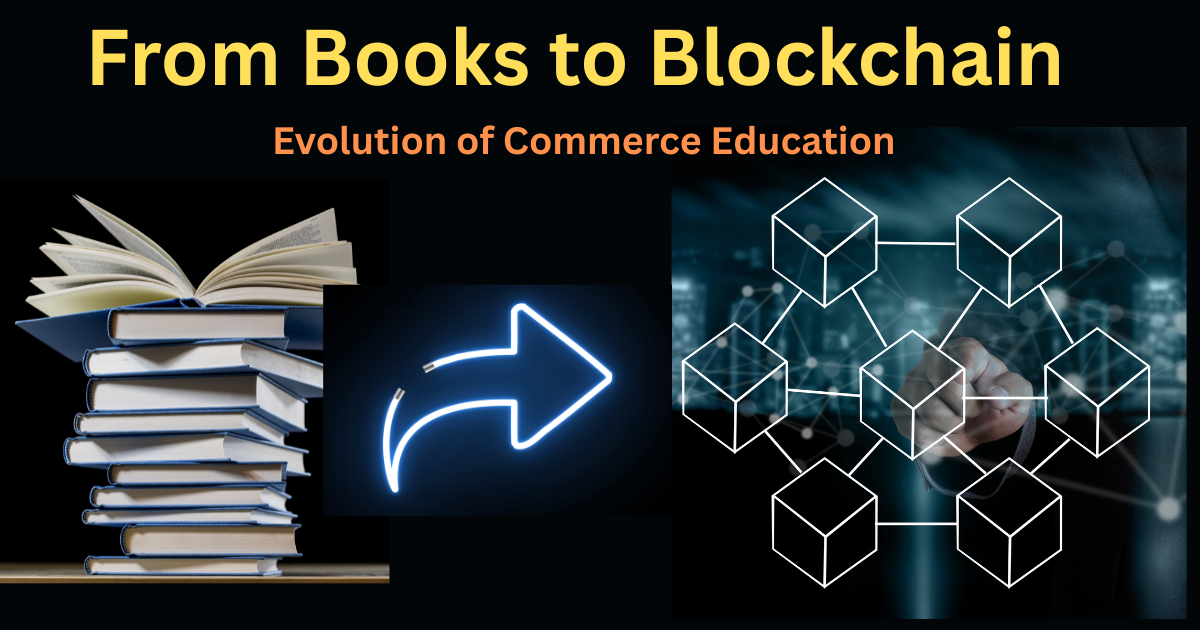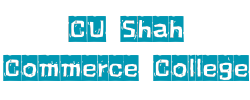From Books to Blockchain: Evolution of Commerce Education Innovative blockchain technology works without the need for a central authority. Blockchain is the underlying technological foundation of cryptocurrencies, such as Bitcoin and Ethereum. Blockchain technology has the potential to play a significant role in promoting sustainability education and advancing the sustainability goals of both individuals and organizations.
From Books to Blockchain
Blockchain is a distributed, digital ledger that records all the transactions in a secure, transparent, and tamper-proof manner. It is a decentralized system that operates on a network of computers, allowing for the secure and efficient exchange of information and value. Blockchain technology uses cryptography to secure transactions and ensure their integrity. This blockchain is maintained by a network of computers, which work together to validate and verify transactions, ensuring that the data is stored.

In the blockchain ecosystem, there are new characteristics of innovators and founders. Deloitte sees an increasing number of entrepreneurs, frequently paired up with industry, and it is starting new organizations with bold ideas that leverage their experience to execute.
One of the key features of blockchain technology is its decentralization, which eliminates the need for intermediaries in transactions. Additionally, the use of cryptographic algorithms and digital signatures makes it virtually impossible for tampering or theft by a single central authority.
What is blockchain?
Blockchain operates as a decentralized distributed database, with data stored across multiple computers, making it resistant to tampering. Transactions are validated through a consensus mechanism, ensuring agreement across the network.
Evolution of Commerce Education
Blockchain is changing the face of business today. It is pushing the boundaries of what is possible, allowing dynamics between businesses and consumers that were previously unimaginable because of the immutability of shared data transacted broadly across an ecosystem of multiple parties.
It took many decades for the Internet to evolve from a network that was primarily used for communication within and between educational and military institutions to a technology platform that could host and implement commercial applications. The traditional e-commerce system is plagued with problems, like payment disputes, chargebacks, fraud, and a lack of transparency. You, however, blockchain can transform e-commerce by making transactions more efficient and safer. Blockchain can be used to build a decentralized network that allows people to securely store and share digital assets. Blockchain would enable buyers to access product details such as the product’s origin and source, as well as reduce the risk of fraud.
Benefits of the Blockchain
- Blockchain can change many industries, like Finance, healthcare, and education
- Blockchain to education can improve efficiency, security, and credibility
- Blockchain can make education more accessible and trustworthy for the students and the employees.
- Using blockchain in education has challenges like adoption, technical knowledge, and regulation.
- Equipment is diverse and necessary for successful blockchain implementation in education.
- Blockchain can promote sustainability education and help individuals and organizations reach their sustainability goals.
- Blockchain technology can transform education and make it more efficient and transparent.
Challenge of blockchain in education
- Adoption: One of the biggest challenges facing the integration of blockchain in education is the need for widespread adoption. This involves the participation of students and educators.
- Technical knowledge: Another challenge is the need for individuals and organizations to have a sufficient understanding of the technology to effectively implement and use it.
- Interoperability: Blockchain technology is still in the early stages of development, and there is currently no standardization or interoperability between different blockchain platforms.
- Regulation: There are currently few regulations in place regarding the use of blockchain in education, and this can make it difficult for institutions and organizations to effectively implement the technology.
- Cost: Another challenge facing the integration of blockchain in education is the cost associated with implementing and maintaining the technology.
- Trust and Reliability: Trust and reliability are critical factors in regard to the use of blockchain technology in education.
- Accessibility: Ensuring that students and educators have access to education.
- Data management: Effective data management is essential for the successful use of blockchain technology in education.
- Education and training: Educating and training individuals on the use of blockchain technology is essential for its successful implementation in the education sector.
Conclusion
In this article we discussed “From Books to Blockchain: Evolution of Commerce Education.” Innovative blockchain technology works without the need for a central authority.








